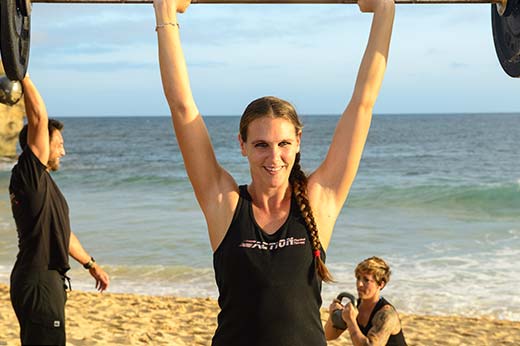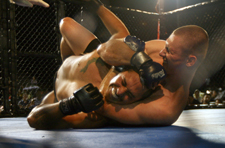Early Greek and Roman writings speak of the beneficial effects of sun and water, and both exercise and massage were used by the ancient Chinese, Persians, Egyptians, and Greeks. The some of the same techniques used in modern physical therapy were used in ancient times.

After World War II physical therapy became widely used in the care of patients. Among the reasons for the great increase in demand for physical-therapy services were the impressive results obtained in treating those injured in battle and industry; the increase in chronic disability resulting from the larger number of older persons in the population; and the rapid development of hospital- and medical-care programs.
A Physical Therapist is a specialist skilled and educated specifically in proper rehabilitation. We are continually educated as to management for different dysfunctions, differentiation of one dysfunction/injury from another and work closely with the referring physician in the development of a rehabilitation program specifically designed for each individual. The other important aspect to remember with physical therapy is that each individual is different. We all have different types of bodies, different patterns of movement, alignments and habits. A physical therapist, along with their trained staff, monitors each individual and attempts to correct improper movements, alignments and habits.
Most importantly with therapy comes education. Because of healthcare guidelines and reimbursement changes, your physician may not have the time needed to explain exactly what your injury/dysfunction/disability is and why/how it occurred. Your therapist is specialized in this and many times is the person who will educate you about the specifics of your problem and what the course of action will be to correct it and hopefully prevent it from reoccurring. Physical therapy focuses on education, correction and prevention.
Includes biomechanical evaluation and muscle strengthening/conditioning to restore function and prevent future injuries.
Therapy programs may follow specific protocols or individualized treatment plans with the aim of therapy being the return of strength, function and mobility. The programs may involve a variety of treatment options with goals set for the patient to resume normal activities of living as much as possible are established by a physical therapist after a thorough evaluation.
Injury assessment, treatment, education & prevention
Knee, shoulder, foot, ankle, back, neck, elbow and wrist rehabilitation
Sports performance enhancement
We will design a customized exercise regimen, provide training and assistance, as well as monitor and modify activities based on the patient’s progress, to restore strength, increase range of motion and improve coordination.
Positive physical therapy results are largely dependent on a person’s adherence to a specific exercise regime that is established by a Physical Therapist. Individual home programs are written, taught, and monitored closely by the therapist through the duration of one’s therapy with progressive modifications that are based on the individual’s needs, progress and established goals.
Restore the patients’ kinesthetic awareness to restore stability during sitting, standing, walking and moving. Therapy includes balance activities, sensory training, ambulation training with or without the use of an assistive device, therapeutic exercise and modalities as appropriate.
Balance is the ability to maintain the body in equilibrium with gravity both statically (e.g. while stationary) and dynamically (e.g. while walking). Persons with balance / coordination deficits due to trauma, disease, stroke or other impairment are assisted through physical therapy in improving their balance by following individual treatment plans established by a physical therapist after a thorough evaluation. Treatment plans may include balance activities, sensory training, ambulation training possibly with an assistive device, therapeutic exercise and modalities as appropriate.
Vestibular rehabilitation therapy is a method of enhancing neurologic function thus improving the function of the balance systems. Treatments vary and depend on the individual and factors that cause it. The goals of balance retraining and vestibular rehabilitation are to reduce dizziness, improve balance, improve visual motor control, increase general activity levels, and help your body compensate for inner ear disorders. Your therapists will design an exercise and movement program to promote optimal function and safe mobility.
You don’t have to live with the pain. Providing specialized treatment to control back and neck pain related to acute and chronic spine conditions. Involves intensive rehabilitation of the spine in order to return the patient to a maximum level of function. Rehabilitation will consist of individualized exercises, training in proper posture, body mechanics, lifting techniques and pain management.
A broad range of activities intended to improve strength, range of motion (including muscle length), cardiovascular fitness, flexibility, or to otherwise increase a person’s functional capacity. An individualized program is established, taught and monitored by a physical therapist/assistant that is based on an initial evaluation and aimed at achieving specific goals.
The therapeutic use of manual or mechanical tension created by a pulling force to produce a combination of distraction and gliding to relieve pain and increase tissue flexibility. Indications for traction therapy include, but are not limited to, decreased sensation that temporarily improves with manual traction, increased muscle tone that is reduced with manual traction, extremity pain or tingling that is temporarily relieved with manual traction, spinal nerve root impediment due to bulging, herniated or protruding disc, and muscle spasms that are causing nerve root impingement and general hypomobility of lumbar or cervical spine regions. Electric traction units exert a pulling force through a rope with various halters and straps.
Action Physical Therapy is the only Physical Therapy office on Kauai that provides wheelchair and mobility device evaluations. During this process you will meet with a skilled Physical Therapist that will assess your physical strengths and limitations in addition to your lifestyle and occupation to help you find a wheelchair that matches your individual needs. Wheelchair evaluations ensure proper fit and function to those who must depend on some type of wheeled mobility.
Modality, as defined in physical therapy, is a term used to identify a broad range of agents that may include thermal acoustic, mechanical, or electric energy to produce physiological changes in tissues for therapeutic purposes. Items such as ice packs, hot packs and ultrasound are common modalities used in treatments at Action Physical Therapy.
Ultrasound machines are a treatment modality used by Action Physical Therapy Kauai that utilize high or low frequency sound waves. These sound waves are transmitted to the surrounding tissue causing deep tissue and muscle warming. This promotes relaxation and is useful in treating tightness and spasms. The warming effect of the ultrasound increase circulation to the area that assists in healing the damaged tissue.
Fascia is the interwoven connective tissue that surrounds our muscles and internal organs. Fascia shrinks when it is inflamed, is slow to heal because of poor blood supply, and painful when inflamed because of its rich nerve supply. Myofascial restrictions occur when the fascia is disrupted or stretched by any injury, no matter how minor. Myofascial release is a therapeutic stretching technique that relies entirely upon the feedback received by the therapist from the patient nonverbally through the patient’s tissues. Myofascial release removes restrictions that impede efficient movement and use of energy for daily tasks. Myofascial release is often incorporated in a patient’s therapeutic treatment plan along with other exercises and/or modalities.
Beyond personal training, your physical therapist can guide you to peak performance, strength and endurance with an educated eye on safety and long-term benefits. Action Physical Therapy designs each program to optimize the physical and psychological capabilities needed to succeed at the highest level. We create our programs based on the latest research and years of practical application in order to help our athletes reach their goals.
Kinesiology taping is a taping technique applied over muscles to reduce pain and inflammation, eliminate swelling and bruising, support muscles, and aid with muscle contraction while an injury is healing. Kinesiology tape provides support as well as healing without restricting range of motion or blood flow. Although the media has primarily associated kinesiology taping with athletes, the majority of its applicants are non athletes. Kinesiology taping can be used for treating a variety of conditions such as carpal tunnel syndrome, back pain, knee pain, shoulder conditions, hamstring injuries, and rotator cuff injuries. It can be an important part of our patient's post-injury or postoperative recuperation and our physical therapists have seen great improvements in their patients rehabilitation throughout the use of kinesiology tape. Both of our therapists, Ginger and Steve, are skilled in the use and application of this important rehabilitative tool.

 Call Action Physical Therapy today to start your new, healthier life
Call Action Physical Therapy today to start your new, healthier life
office phone:: 808.246.0144
fax:: 808.245.5148
physical address:: 4366 Kukui Grove Street, Suite #203, Lihue, Hawaii 96766
email:: info@ActionPTKauai.com
TESTIMONIAL::
Graham Kovarik :: Jiu Jitsu & Mixed Martial Arts
 "I actively compete in jiu jitsu and mma. I am also currently striving to get my rkc certification. Living this physically demanding lifestyle, I have come across some injuries along the way. I have found that no matter what therapist I get paired up with during my sessions at Action Physical Therapy, that my level of care is top notch. Not only are they always friendly but they each take the time to explain in detail the exercise they want me to perform, which muscle groups will be used, and how it will benefit my progress. I know that if I am ever in need of physical therapy, Steve and his staff at Action Physical Therapy are the only people that I would` trust to get me back to 100% and I recommend them to all my friends."
"I actively compete in jiu jitsu and mma. I am also currently striving to get my rkc certification. Living this physically demanding lifestyle, I have come across some injuries along the way. I have found that no matter what therapist I get paired up with during my sessions at Action Physical Therapy, that my level of care is top notch. Not only are they always friendly but they each take the time to explain in detail the exercise they want me to perform, which muscle groups will be used, and how it will benefit my progress. I know that if I am ever in need of physical therapy, Steve and his staff at Action Physical Therapy are the only people that I would` trust to get me back to 100% and I recommend them to all my friends."
808.246.0144 | 4366 Kukui Grove Street, Suite #203, Lihue, Hawaii 96766 | info@ActionPTKauai.com
©2011-2019 Action Physical Therapy - All rights reserved

